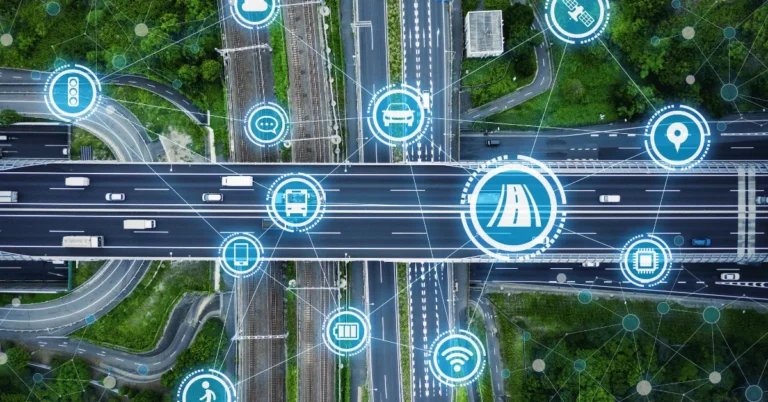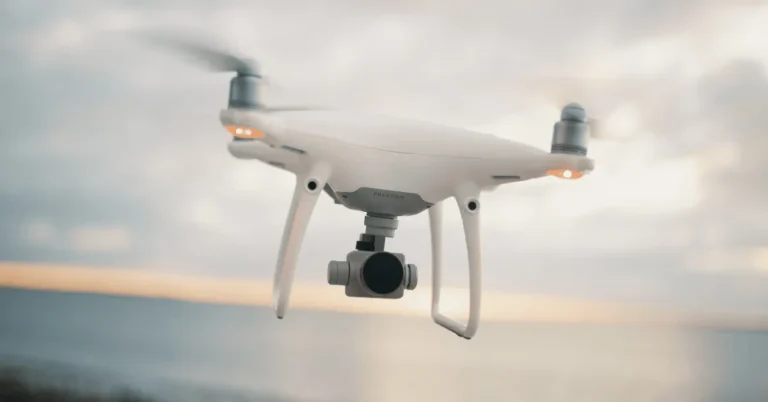The Costs of Drone Package Delivery Based on Range

Drone package delivery is revolutionizing the logistics industry, leveraging advanced technology to enhance last-mile delivery solutions.
These unmanned aerial vehicles (UAVs) are equipped with sophisticated navigation systems, allowing them to autonomously transport packages over various distances.
The growing popularity of drones in logistics is largely attributed to their potential to significantly reduce delivery times and operational costs.
As companies strive to meet the increasing demand for faster delivery services, drones offer a promising alternative to traditional delivery methods.
One of the primary benefits of drone package delivery is speed. Unlike ground vehicles, drones can bypass traffic congestion and follow direct flight paths, ensuring timely delivery of packages.
This efficiency is particularly advantageous in urban areas where traffic delays are common. Moreover, drones can access remote or hard-to-reach locations that might be challenging for conventional delivery vehicles.
This capability not only expands the reach of delivery networks but also ensures that customers in rural areas receive timely services.
Another significant advantage is cost-effectiveness. Drones operate on electric power, reducing the reliance on fossil fuels and lowering carbon emissions.
This environmentally friendly aspect is increasingly important as companies seek sustainable logistics solutions.
Additionally, the automation of drone operations minimizes the need for human labor, further cutting down on operational expenses.
Despite these advantages, the implementation of drone delivery systems raises important questions, particularly regarding cost.
The expenses associated with drone delivery can vary significantly based on several factors, including the delivery range.
Understanding these costs is crucial for businesses considering the integration of drones into their logistics operations.
This blog post aims to delve into the intricacies of drone delivery costs, focusing on how the range of delivery impacts the overall expenditure.
Want to know more about Is the US Lagging Behind the World in Army Drones Technology?
Factors Influencing the Cost of Drone Delivery
The cost of drone package delivery is influenced by a multitude of factors, with distance or range being a primary determinant.
As the distance increases, so does the energy consumption, which directly impacts operational expenses.
Drones, whether powered by batteries or alternative energy sources, require significant energy to cover long distances, thus escalating the costs.
Additionally, longer journeys contribute to increased wear and tear on the drones, necessitating more frequent maintenance and potentially shortening the lifespan of the equipment.
Operational logistics also play a crucial role in determining costs. Coordinating drone flights, especially over extended ranges, involves intricate planning to ensure efficiency and safety.
This includes route optimization, air traffic management, and adherence to delivery schedules, all of which require sophisticated software and skilled personnel, thereby adding to the overall expenses.
Furthermore, regulatory compliance is a significant cost factor. Drones must operate within the frameworks set by aviation authorities, which often involve obtaining permits, adhering to flight restrictions, and ensuring safety standards.
Compliance with these regulations can be costly, especially when considering the fines and penalties for non-compliance.
Insurance is another vital component, as it covers potential damages to the drone, payload, or third parties.
The cost of insurance is influenced by the risk profile of the delivery, which includes the distance covered, the value of the payload, and the operational environment.
Maintenance costs are inevitable, given the mechanical and electronic components of drones. Regular inspections, repairs, and part replacements are necessary to ensure operational reliability and safety. These costs can vary based on the drone model and the intensity of its usage.
The type of payload also affects delivery costs. Different packages require different handling protocols, with some needing specialized containers or temperature controls, thereby increasing the complexity and cost of the delivery process.
When compared to traditional delivery methods, drone delivery presents a unique cost structure. While conventional methods might have lower energy costs, they often involve higher labor and infrastructure expenses.
Additionally, drones offer the advantage of speed and accessibility in remote areas, potentially justifying the higher initial investment and operational costs.
Wondering if there are legal ways to keep drones away from your house? Check out our guide on Effective Legal Ways to Prevent Drones from Flying Around Your House.
Is Drone Delivery Costlier Compared to Traditional Methods?
The advent of drone technology has sparked significant interest in its application for package delivery. A critical question arises: is drone delivery costlier than traditional methods such as trucks and bikes?
To address this, we need to consider several factors, including initial investment, operational costs, delivery speed, and environmental impact.
Firstly, the initial investment in drone delivery systems can be substantial. Purchasing drones, setting up control systems, and ensuring compliance with regulatory requirements contribute to higher upfront costs.
Conversely, traditional delivery methods benefit from established infrastructure, making their initial expenses relatively lower.
However, as drone technology matures and economies of scale come into play, the initial costs are expected to decrease.
Operational costs also present a mixed picture. Drones, being fully electric, offer a lower cost per mile compared to fuel-dependent trucks.
Maintenance costs for drones can be lower as well, given fewer mechanical parts. Yet, the need for constant software updates and potential repair costs for drones due to crashes or technical failures must be taken into account.
Traditional vehicles, while having higher fuel and maintenance costs, have a long history of operational efficiency and reliability.
When it comes to the speed of delivery, drones have a distinct advantage, particularly in urban areas with heavy traffic.
They can bypass road congestion, providing faster and more predictable delivery times. This can be a significant benefit for time-sensitive deliveries, potentially justifying higher costs in certain scenarios.
Environmental impact is another critical consideration. Drones offer a cleaner alternative to fuel-burning delivery trucks, contributing to reduced carbon emissions.
This aligns with the growing emphasis on sustainable practices in logistics. Companies like Amazon and UPS have already started incorporating drones into their delivery fleets, citing environmental benefits as a key motivation.
In conclusion, while drone delivery may currently carry higher initial and certain operational costs, its potential for faster delivery times and lower environmental impact presents a compelling case.
As drone technology advances and becomes more cost-efficient, it is likely to become increasingly competitive with traditional delivery methods.
Choosing the perfect drone motor and propeller combo can be tricky, but fret no more! Dive deeper into our guide on “What Factors Are Considered When Choosing a Drone Motor and Propeller Test Kit?” for a smooth takeoff.
Estimating the Cost of Drone Delivery Services
As drone delivery services continue to develop, understanding the costs associated with such services becomes essential for both consumers and businesses.
This section will dissect the potential expenses for short-range, mid-range, and long-range drone deliveries, taking into account various pricing models and the influence of technological advancements.
Short-range deliveries, typically within a 5-mile radius, are generally the least expensive. The cost for these services can range from $5 to $10 per delivery, depending on factors such as payload weight and delivery speed.
Companies may offer flat-rate pricing for these deliveries, making them an attractive option for local businesses wanting to ensure swift delivery of goods.
Mid-range deliveries, covering distances up to 20 miles, involve more complex logistics and higher operational costs. The per-mile cost for these deliveries can range from $1 to $2, resulting in an overall cost between $20 to $40 per delivery.
Subscription models are becoming popular for mid-range deliveries, where customers pay a monthly fee for a certain number of deliveries, offering a cost-effective solution for regular users.
Long-range deliveries, extending beyond 20 miles, are the most expensive due to increased energy consumption and regulatory compliance costs.
These deliveries might cost between $50 to $100, with premium charges applicable for expedited services. Businesses may also adopt a hybrid pricing model, incorporating both per-mile and flat-rate components to cover the extensive operational expenses involved.
As drone technology advances and scales, these costs are expected to decrease. Economies of scale will play a significant role in reducing prices, making drone delivery more accessible.
Additionally, improvements in battery life, automation, and air traffic management will contribute to more efficient and cost-effective services.
This article explores the question: What Type of RDR is Going to be Equipped on a Drone?
Conclusion
In conclusion, estimating the cost of drone delivery services involves considering a range of factors.
By understanding the pricing models and potential future trends, businesses and consumers can better prepare for the integration of this innovative delivery method into their operations.







